-
 Bitcoin
Bitcoin $83,309.8774
-1.88% -
 Ethereum
Ethereum $1,591.3660
-2.42% -
 Tether USDt
Tether USDt $0.9998
-0.01% -
 XRP
XRP $2.0864
-2.28% -
 BNB
BNB $580.9809
-0.68% -
 Solana
Solana $125.6682
-3.01% -
 USDC
USDC $0.9999
0.00% -
 TRON
TRON $0.2516
0.03% -
 Dogecoin
Dogecoin $0.1542
-3.08% -
 Cardano
Cardano $0.6142
-3.69% -
 UNUS SED LEO
UNUS SED LEO $9.3431
-0.92% -
 Chainlink
Chainlink $12.3641
-2.37% -
 Avalanche
Avalanche $18.8865
-5.31% -
 Stellar
Stellar $0.2358
-2.40% -
 Toncoin
Toncoin $2.8805
-0.91% -
 Shiba Inu
Shiba Inu $0.0...01169
-1.89% -
 Sui
Sui $2.1008
-4.00% -
 Hedera
Hedera $0.1574
-5.48% -
 Bitcoin Cash
Bitcoin Cash $318.9019
-1.04% -
 Litecoin
Litecoin $75.9077
-2.52% -
 Polkadot
Polkadot $3.5432
-3.69% -
 Dai
Dai $1.0000
0.00% -
 Bitget Token
Bitget Token $4.2538
-1.47% -
 Hyperliquid
Hyperliquid $15.1227
-5.40% -
 Ethena USDe
Ethena USDe $0.9991
0.00% -
 Pi
Pi $0.6199
-16.77% -
 Monero
Monero $217.3319
2.19% -
 Uniswap
Uniswap $5.2227
-2.58% -
 OKB
OKB $52.2436
1.28% -
 Pepe
Pepe $0.0...07082
-3.62%
How to increase profits through dual mining?
Dual mining can boost profitability by mining two cryptocurrencies simultaneously, but success depends on choosing compatible coins and optimizing your rig's settings.
Apr 06, 2025 at 10:00 pm
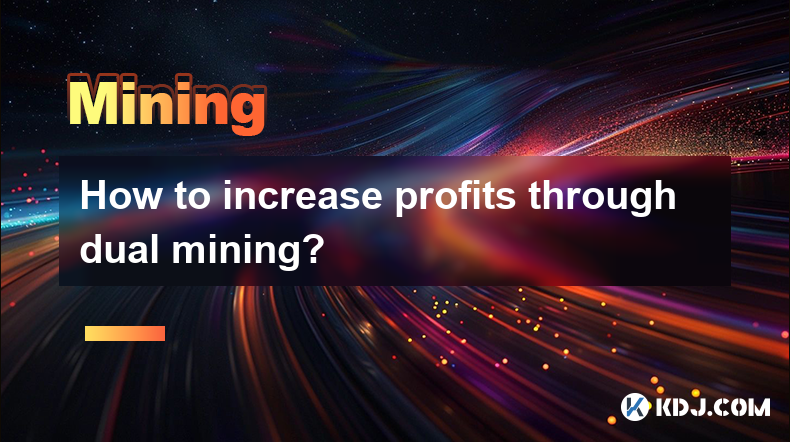
Understanding Dual Mining and its Profit Potential
Dual mining, also known as simultaneous mining, involves mining two different cryptocurrencies simultaneously using a single mining rig. This is typically achieved with algorithms that allow for the efficient mining of both coins concurrently. The primary advantage lies in potentially increasing overall profitability by leveraging the existing hashing power to generate rewards from two separate cryptocurrencies. However, the profitability depends heavily on several factors, including the chosen cryptocurrencies, their current difficulty, and the hardware used. Understanding these factors is crucial for maximizing returns.
Choosing the Right Cryptocurrencies for Dual Mining
The selection of cryptocurrencies is paramount to successful dual mining. Not all cryptocurrencies are suitable for dual mining. Ideally, you should choose coins with compatible algorithms. For example, some GPUs are particularly efficient at mining Ethereum Classic (ETC) and another coin using the same algorithm or a very similar one. Researching the current profitability of each coin is crucial. Use online mining profitability calculators to estimate potential earnings based on your hardware's hash rate and the current network difficulty of both cryptocurrencies. Remember to factor in electricity costs.
Optimizing Your Mining Rig for Dual Mining
Optimizing your mining rig for dual mining requires careful configuration. This often involves adjusting mining software settings to balance the workload between the two algorithms. Incorrect configuration can lead to reduced efficiency and lower overall profits. You'll need to find the sweet spot that maximizes your mining output for both coins without overloading your hardware. Overclocking can boost hash rates, but it also increases the risk of hardware damage and reduced lifespan. Proceed with caution and monitor temperatures closely.
Software and Configuration for Dual Mining
Several mining software options support dual mining. Popular choices include Claymore's Dual Miner, PhoenixMiner, and TeamRedMiner. Each software has its own configuration options, and finding the optimal settings often requires experimentation. You'll need to specify the mining pools for both cryptocurrencies, your wallet addresses, and adjust parameters like intensity and threads to fine-tune performance. Proper configuration is essential for maximizing your mining efficiency and avoiding errors.
Monitoring and Adjusting Your Dual Mining Setup
Continuous monitoring is vital for maximizing profits in dual mining. Regularly check your mining software's statistics to track your hash rates, earnings, and any errors. The difficulty of both cryptocurrencies can fluctuate, impacting profitability. You may need to adjust your configuration or even switch to different coins if the profitability of one coin significantly drops. Regular maintenance of your mining rig is also important to prevent hardware failures.
Managing Risks Associated with Dual Mining
Dual mining comes with inherent risks. The profitability of both cryptocurrencies can be volatile, and a sudden drop in the value of either coin can significantly reduce your overall earnings. The fluctuating difficulty of the algorithms can also impact your profits. Additionally, hardware failure is a risk, especially with overclocking. Always back up your wallet data and consider using multiple mining pools to mitigate risks.
Hardware Considerations for Dual Mining
The choice of mining hardware significantly impacts your dual mining profitability. GPUs are generally preferred for dual mining, especially those with high memory bandwidth. ASICs are typically specialized for single-algorithm mining and less versatile for dual mining. Consider the power consumption of your hardware, as electricity costs can significantly reduce your profits. High-end GPUs with ample memory are generally more suitable for dual mining than lower-end models. Ensure your power supply is sufficient for the combined power draw of both GPUs.
Pool Selection for Dual Mining
Choosing the right mining pools for both cryptocurrencies is crucial. Select pools with a good reputation, low fees, and stable payouts. Consider factors like pool size, payout methods, and server locations. Diversifying your pools can minimize the risk associated with pool downtime or issues. Research and compare different pools before making a decision. Check for transparency and security measures in place to protect your earnings.
Understanding Mining Pool Fees and Payout Structures
Mining pools typically charge fees for their services. These fees can vary depending on the pool. Understanding the fee structure is crucial for calculating your net profits. Payout structures also differ. Some pools offer regular payouts, while others have minimum payout thresholds. Choose pools with transparent fee structures and payout methods that suit your preferences. Compare fees across multiple pools to find the most cost-effective option.
Security Measures for Dual Mining
Security is paramount in cryptocurrency mining. Use strong passwords for your mining software and wallet accounts. Keep your mining rig's software updated to patch security vulnerabilities. Consider using a dedicated VPN to enhance your privacy and security. Regularly back up your wallet data to prevent data loss. Implement robust security measures to protect your investments and earnings from potential threats.
The Importance of Constant Monitoring and Adjustment
Dual mining requires constant monitoring and adjustment. Regularly check your mining software for errors and adjust settings as needed. Monitor the profitability of both cryptocurrencies and be prepared to switch coins or adjust your configuration if profitability changes significantly. Staying informed about market trends and algorithm changes is essential for maintaining profitability in dual mining.
Frequently Asked Questions
Q: What are the risks associated with dual mining?
A: Risks include volatility in cryptocurrency prices, fluctuating mining difficulty, hardware failures, and potential software bugs. Proper risk management strategies, like diversifying across pools and coins, are crucial.
Q: What hardware is best suited for dual mining?
A: High-end GPUs with ample memory are generally preferred. ASICs are less versatile for dual mining due to their specialized nature.
Q: Which software is recommended for dual mining?
A: Popular options include Claymore's Dual Miner, PhoenixMiner, and TeamRedMiner. The best choice depends on your specific hardware and cryptocurrency selections.
Q: How do I choose the right cryptocurrencies for dual mining?
A: Choose coins with compatible algorithms and check their current profitability using online calculators, considering factors like network difficulty and electricity costs.
Q: How do I optimize my mining rig for dual mining?
A: This involves adjusting mining software settings to balance the workload between the two algorithms, carefully managing overclocking to avoid hardware damage, and ensuring sufficient cooling.
Disclaimer:info@kdj.com
The information provided is not trading advice. kdj.com does not assume any responsibility for any investments made based on the information provided in this article. Cryptocurrencies are highly volatile and it is highly recommended that you invest with caution after thorough research!
If you believe that the content used on this website infringes your copyright, please contact us immediately (info@kdj.com) and we will delete it promptly.
- Movement Labs and the Movement Network Foundation have launched an independent investigation into recent market-making irregularities related to the MOVE token.
- 2025-04-16 09:15:12
- Shiba Inu (SHIB) burn rate saw an over 2000% hike, leading to the removal of 20.83 million tokens from circulation.
- 2025-04-16 09:15:12
- Securitize Acquires MG Stover's Fund Administration Business to Become the Largest Digital Asset Fund Administrator
- 2025-04-16 09:10:12
- Trump administration plans to present Congress with cuts to most funding for public media
- 2025-04-16 09:10:12
- XRP (XRP) Displays Promising Growth Potential as It Currently Trades Above $2.00 and the 21-week EMA
- 2025-04-16 09:05:13
- BYDFi Lists $KERNEL, the Governance Token of KernelDAO, with Spot Trading Now Live
- 2025-04-16 09:05:13
Related knowledge
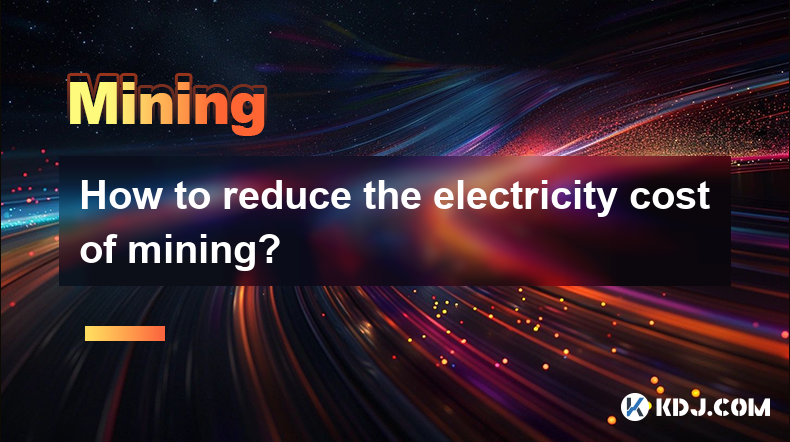
How to reduce the electricity cost of mining?
Apr 16,2025 at 08:42am
Mining cryptocurrencies, particularly Bitcoin, is an energy-intensive process that can lead to significant electricity costs. However, there are several strategies that miners can employ to reduce these expenses and make their operations more cost-effective. In this article, we will explore various methods to minimize the electricity cost of mining. Cho...
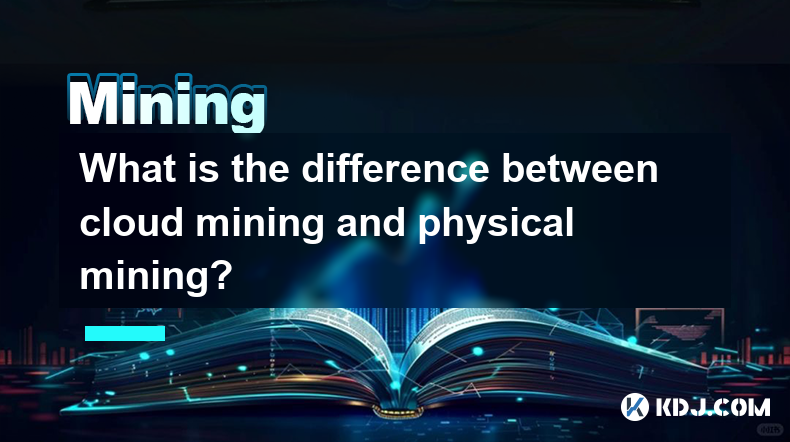
What is the difference between cloud mining and physical mining?
Apr 16,2025 at 01:49am
What is the difference between cloud mining and physical mining? In the world of cryptocurrencies, mining is the process by which new coins are generated and transactions are verified and added to the blockchain. There are two primary methods of mining: cloud mining and physical mining. Understanding the differences between these two approaches can help...
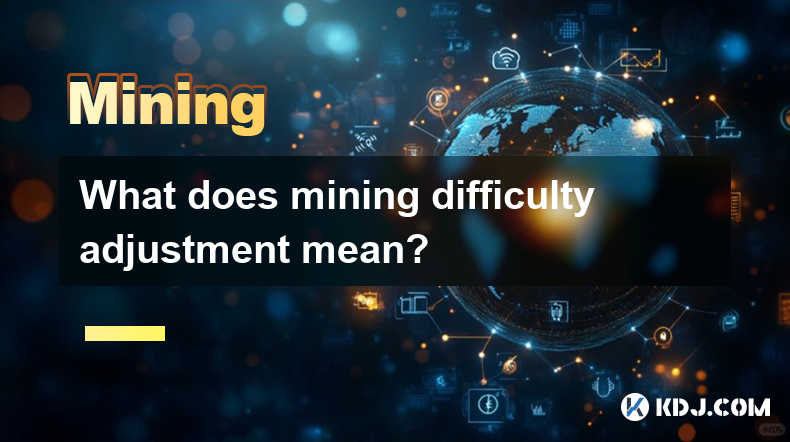
What does mining difficulty adjustment mean?
Apr 16,2025 at 12:42am
What does mining difficulty adjustment mean? Mining difficulty adjustment is a crucial mechanism in blockchain networks, particularly in Proof of Work (PoW) systems like Bitcoin. It ensures that the rate at which new blocks are added to the blockchain remains consistent, despite fluctuations in the total computational power (hash rate) of the network. T...
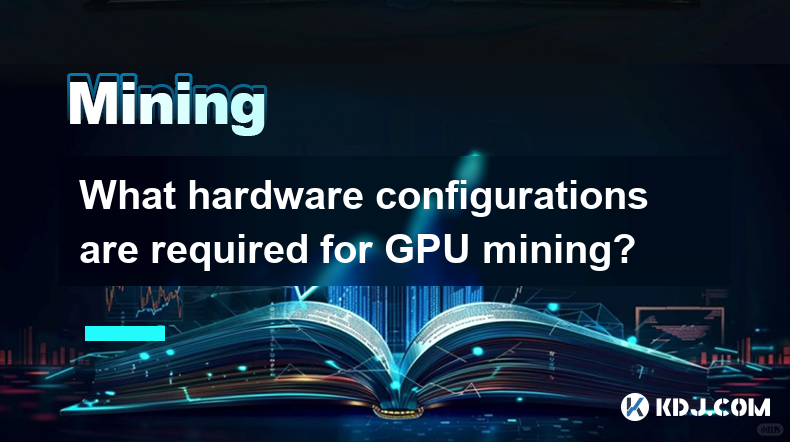
What hardware configurations are required for GPU mining?
Apr 16,2025 at 09:21am
GPU mining has become a popular method for cryptocurrency enthusiasts to mine various cryptocurrencies, such as Ethereum, Ravencoin, and others. To successfully engage in GPU mining, it is essential to understand the hardware configurations required to maximize efficiency and profitability. This article will delve into the specifics of what you need to ...
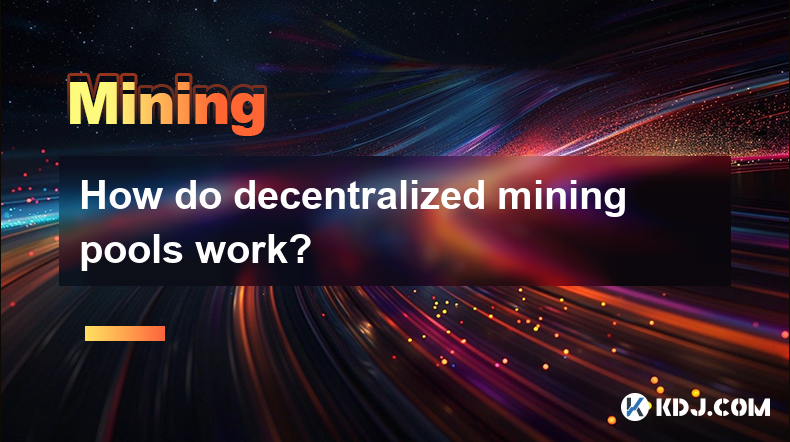
How do decentralized mining pools work?
Apr 16,2025 at 05:42am
Decentralized mining pools represent a significant evolution in the world of cryptocurrency mining, offering a more democratic and transparent approach compared to traditional centralized pools. In this article, we will explore the mechanics of decentralized mining pools, their benefits, and how they operate within the cryptocurrency ecosystem. What are...
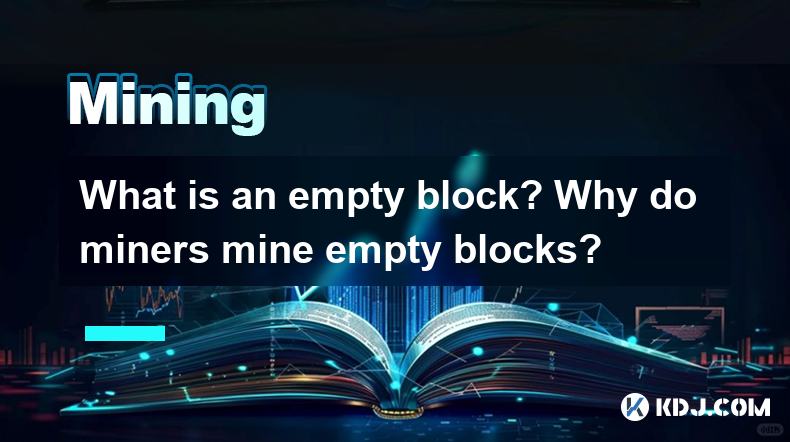
What is an empty block? Why do miners mine empty blocks?
Apr 16,2025 at 01:28am
What is an Empty Block?An empty block in the context of blockchain technology, particularly in cryptocurrencies like Bitcoin, refers to a block that contains no transactions other than the coinbase transaction. The coinbase transaction is a special transaction in which new bitcoins are generated and awarded to the miner who successfully mines the block....

How to reduce the electricity cost of mining?
Apr 16,2025 at 08:42am
Mining cryptocurrencies, particularly Bitcoin, is an energy-intensive process that can lead to significant electricity costs. However, there are several strategies that miners can employ to reduce these expenses and make their operations more cost-effective. In this article, we will explore various methods to minimize the electricity cost of mining. Cho...

What is the difference between cloud mining and physical mining?
Apr 16,2025 at 01:49am
What is the difference between cloud mining and physical mining? In the world of cryptocurrencies, mining is the process by which new coins are generated and transactions are verified and added to the blockchain. There are two primary methods of mining: cloud mining and physical mining. Understanding the differences between these two approaches can help...

What does mining difficulty adjustment mean?
Apr 16,2025 at 12:42am
What does mining difficulty adjustment mean? Mining difficulty adjustment is a crucial mechanism in blockchain networks, particularly in Proof of Work (PoW) systems like Bitcoin. It ensures that the rate at which new blocks are added to the blockchain remains consistent, despite fluctuations in the total computational power (hash rate) of the network. T...

What hardware configurations are required for GPU mining?
Apr 16,2025 at 09:21am
GPU mining has become a popular method for cryptocurrency enthusiasts to mine various cryptocurrencies, such as Ethereum, Ravencoin, and others. To successfully engage in GPU mining, it is essential to understand the hardware configurations required to maximize efficiency and profitability. This article will delve into the specifics of what you need to ...

How do decentralized mining pools work?
Apr 16,2025 at 05:42am
Decentralized mining pools represent a significant evolution in the world of cryptocurrency mining, offering a more democratic and transparent approach compared to traditional centralized pools. In this article, we will explore the mechanics of decentralized mining pools, their benefits, and how they operate within the cryptocurrency ecosystem. What are...

What is an empty block? Why do miners mine empty blocks?
Apr 16,2025 at 01:28am
What is an Empty Block?An empty block in the context of blockchain technology, particularly in cryptocurrencies like Bitcoin, refers to a block that contains no transactions other than the coinbase transaction. The coinbase transaction is a special transaction in which new bitcoins are generated and awarded to the miner who successfully mines the block....
See all articles























































































